by Wine Owners
Posted on 2016-02-01
Do collectors ever drink affordable, everyday drinkers? Of course we do!
Don’t forget that in the heyday of Bordeaux, ‘luncheon’ wines were required purchasing behaviour to ‘balance’ some of the more sought after wines whose supply was carefully managed through judicious releasing strategies by the Châteaux.
At time of purchase, these low cost, often delicious (sometimes extremely dull) drinkers seemed cheap, their modest cost leading on the eager buyer. I remember being promised by one merchant that I shouldn’t hold back from balancing with cheaper wines: “you’ll always be able to sell them for what you paid”.
10-20 years on, the true cost of these wines becomes apparent. Annual storage fees of £10-14 adds up over time. If you thought you might never drink them, it will have proved to be a rather expensive balancing exercise to get allocations of the wines you really wanted.
Continuing to store them is only recommended if you have an idea of when you are going to drink them (a daughter’s wedding perhaps?). Alternatively pull them out of storage and keep them at home where they’re more likely to be broached.
Otherwise, it’s time to move these wines on, get what you can for them, and reduce your annual storage bill. There are plenty of restaurants and wine lovers starting out who are attracted by bottles that are fully mature at bargain prices.
by Wine Owners
Posted on 2013-10-30
One of the pitfalls of collecting is knowing when to pull a case out of storage, and making sure that older stocks don’t linger unappreciated until past their prime. Your Wine Owners Portfolio allows you to sort wines by maturity, so you can decide what to bring out of storage for drinking, what to keep, and what you might wish to sell on. The drinking dates are backed up by over 100,000 reviews, so you can keep up to date with professional appraisals of your wines.
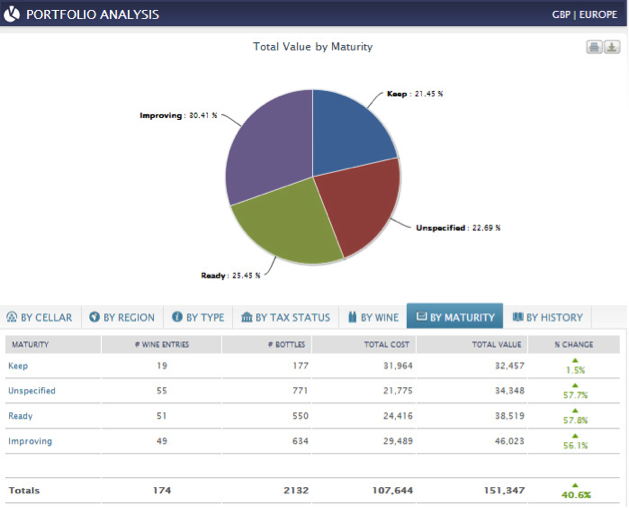
Bordeaux
In younger vintages, it’s about possible to start drinking 2001, 2002, & 2004. 2001 and 2004 have a reasonable amount in common, being both classically styled wines without the opulence or longevity of 2000 and 2005. Useful in this case to refer back to Jancis Robonson’s FT article (2 Apr 2011), which sets out the case for 2001 as a useful ‘forgotten’ vintage. 2001 Chateau Grand Puy Lacoste Pauillac 5eme Cru Classe AOC, rated highly in that article and with a market price of £423 seems like a particular steal, perhaps because Robert Parker’s rating, so often a market driver for Bordeaux prices, is quite low. The vast majority of the 2005s on the left bank are still developing, certainly so at First and Second Growth level.
Vintages from the mid-nineties are subject to growing demand, as these wines enter their prime drinking window. 95s and 96s in particular are beginning to turn serious – try Chateau Calon-Segur St Estephe 3eme Cru Classe AOC 1995 for a well priced example.
For those who don’t have a taste for the very tertiary, Bordeaux from the good mid-eighties vintages should be starting to get finished up now. Most 85’s, and certainly 86’s and 88’s, except at the very top level are getting close to the beginning of decline, and are better off on the table now than spending another few years in the cellar.
Burgundy
Aged Burgundy is notoriously difficult to source, but for those who already have it in their cellars, drinking dates are heavily vintage dependent. Collectors with 2007s in the the cellar, below Grand Cru level, can start to look at those wines now, with many showing an extremely fresh and vibrant character now, perfect for those who like an early drinking, energetic style.
Domaine Comte Georges de Vogue Chambolle Musigny Premier Cru AOC 2007
Older vintages, if you can find them, that are beginning to show well include 2002, and 1999: try Hospices de Beaune Corton Cuvee Charlotte Dumay Grand Cru AOC 1999 as an example of a Corton that should be drinking superbly now.
Champagne
Plenty of merchants and supermarkets will be gearing up for Christmas offers around Champagne in the next month, but the best way to be prepared is to start a year in advance. Most NV bottlings will seriously benefit from a further year in the cellar, so if you have the space to keep roughly 12 months stock of champagne and top up as you go, that’s the best way to make sure you’re drinking the wine at its peak.
At vintage and prestige cuvee level, 1996 and 1999 wines are both beginning to come into their own, with Moet & Chandon Dom Perignon Champagne 1999 showing particularly well recently.
With over 100,000 reviews available for more than 145,000 fine wines, we think Wine Owners offers a great solution to keeping track of your wines with over £37,000,000 of stock under management.
by Wine Owners
Posted on 2013-04-05
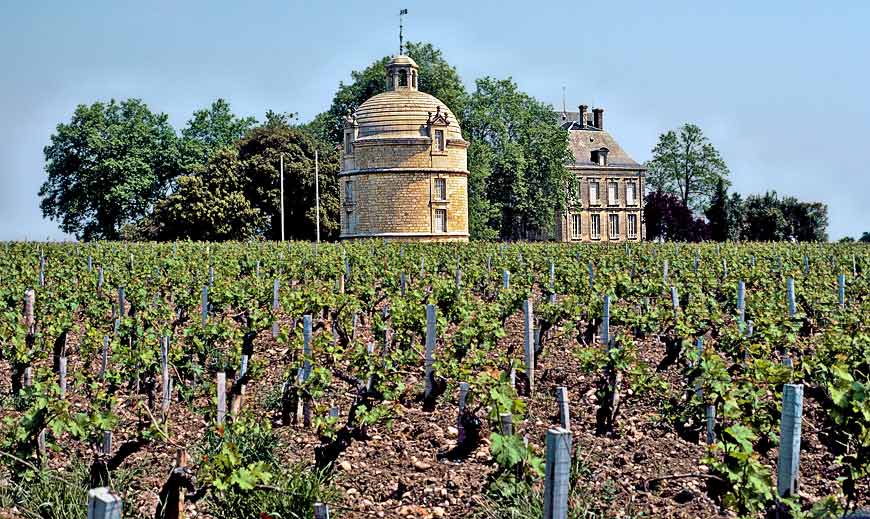
With updated prices released on Wine Owners' - the world's first full service, independent asset management and trading exchange - it's an opportune time to check on the market price of Chateau Latour 1995.
Why? Because having withdrawn from the en primeur release system in April 2012, Latour director Frederic Engerer had announced that each year a vintage of Chateau Latour and the second wine, Les Forts de Latour, would be released at the start of their perfect drinking window.On March 19th 2013 the first of the 'library' releases, 1995, was offered at a UK retail price of (GBP) £4,950.Each bottle comes with a prooftag (a security product guaranteeing traceability and authenticity) and sports a back label stating the date of shipment from the chateau.1995 was a great vintage for Latour, as evidenced by the following wine critic reviews:
Robert Parker 96 points (June 2000)
A beauty, the opaque dense purple-coloured 1995 exhibits jammy cassis, vanillin, and minerals in its fragrant but still youthful aromatics. Medium to full-bodied, with exceptional purity, superb concentration, and a long, intense, ripe, 40-second finish, this is a magnificent example of Latour. As the wine sat in the glass, scents of roasted espresso and toasty new oak emerged. This classic will require considerable cellaring. Anticipated maturity: to 2050.
Jancis Robinson 18.5 points (2011)
Lustrous deep crimson almost right out to the rim still. Hint of mint on the nose – quite aromatic. Pretty. Charming for a Latour grand vin! Though there is a strong undertow of graphite. More intense than 1996. Drink to 2035
Lisa Perrotti-Brown 96 points (Nov 2012)
Deep garnet-brick in colour, the nose is well developed, displaying dried berry, leather, vanilla pod and anise notes with a faint whiff of potpourri. The palate is wonderfully fleshy and opulent with velvety, approachable tannins and a long finish.
Latour took criticism for their release price from some quarters arguing that that it was too high compared to market prices for previously released-en-primeur bottles of 1995.
Our analysis (Wine Owners Market Level calculation: base data sourced from Wine Searcher) shows the current market price per bottle is £351, or the rounded equivalent of £4,200 for a 12x75cl case.
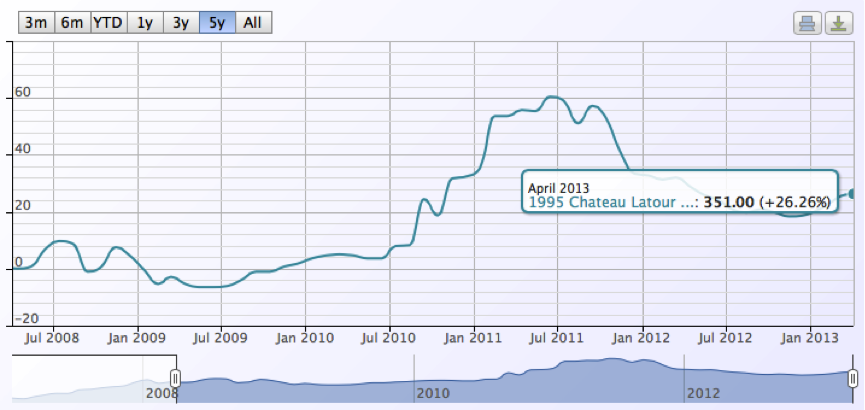
As the chart shows this is down from £433 per bottle in April 2012, or the rounded equivalent of £5,200 for a 12x75cl case, showing the prolonged tough time first growths have endured since hitting their giddy heights in the summer of 2011.
So is a £700 case market premium for an ex chateau release with perfect provenance and a prooftag worth it?
Yes, according to Lisa Perrotti-Brown MW who believes a 15% premium is worth paying to source that perfectly stored and shipped wine.
And that, funnily enough, is precisely the premium that Latour decided to place on the 1995 library release.
by Wine Owners
Posted on 2013-04-04
Fine wine is a multi-million dollar industry and is fraught with peril. From fake bottles to fraudulent contents, from mislabelled wine to misled consumers, wine has been faked, forged, and used for fraud for as long as it has been consumed.
This eBook provides a brief history of forgery and fraud in the fine wine world, including case studies on Rudy Kurniawan and Hardy Rodenstock, and is available from Amazon for just £1.53, or free to borrow and read on the Kindle for 'Prime' users.
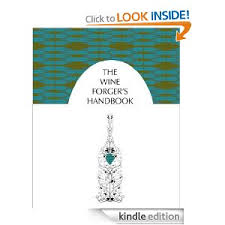
The Wine Forger’s Handbook also functions as a guide, both on how fraudsters have been found out, and tips on how to avoid being fooled in your own wine purchases.
Written by a pair of award-winning writers, wine expert Stuart George and best-selling art crime expert Dr. Noah Charney, The Wine Forger’s Handbook is a fun, informative, engaging read, and one which could potentially save you from making costly purchases of fake wine.
The Wine Forger’s Handbook is ideal for anyone from wine collectors to casual drinkers, or those who enjoy true crime stories of forgery, deception, and detection set against the vivid backdrop of the world of wine.
ABOUT THE AUTHORS
Noah Charney
Noah Charney is a professor of art history specialising in art crime and a best-selling author of fiction and non-fiction.
His books include the international best-seller novel The Art Thief; the best-selling Stealing the Mystic Lamb: The True Story of the World’s Most Coveted Masterpiece; The Thefts of the Mona Lisa: On Stealing the World’s Most Famous Painting; and the guidebook series Museum Time. He is editor of Art & Crime: Exploring the Dark Side of the Art World and editor-in-chief of The Journal of Art Crime, the first peer-reviewed academic journal in its field.
He is the founder of ARCA, the Association for Research into Crimes against Art, an international non-profit research group on art crime and cultural heritage protection (http://www.artcrimeresearch.org/). He teaches art history and art crime on the ARCA Postgraduate Certificate Program in Art Crime and Cultural Heritage Protection at American University of Rome and for Brown University.
He is a popular speaker and recently gave a TED talk on art crime, which can be viewed at http://www.youtube.com/watch?v=T897Foh5s0g. He is an award-winning columnist for numerous magazines, with regular columns in The Daily Beast (http://www.thedailybeast.com/features/how-i-write.html), Tendencias del Mercado del Arte, and ArtInfo (http://blogs.artinfo.com/secrethistoryofart/).
He encourages readers to join him on Facebook (https://www.facebook.com/NoahCharney) or through his website http://www.noahcharney.com/.
Stuart George
Stuart George is an independent wine consultant in London.
In 2003 he was awarded the UK Young Wine Writer of the Year. Stuart was co-author of The Wine Box (2005), picture editor and leading contributor to 1001 Wines You Must Try Before You Die (2008), and editor of the award-winning The Finest Wines of Tuscany and Central Italy(2009) and The Finest Wines of Champagne (2009).
Stuart has contributed to publications on five continents, including The Daily Telegraph, Fine Wine International, Fine Wine & Liquor, Meininger’s Wine Business Monthly, Sommelier Journal, The Tasting Panel Magazine and the Times Literary Supplement.
He is a sought-after show judge and has been a jury member at wine competitions in Austria, Brazil, Chile, China, France, Luxembourg, Portugal and Spain. He has worked harvests in France, Italy and Australia.
His website and blog is at http://www.StuartGeorge.net/. He can be followed on Twitter at @sdgeorge1974.
by Wine Owners
Posted on 2013-03-25
Wine Owners provides drinking advice across a large part of its growing database of 82,000 fine wines, based on 75cl bottles.
These drinking ranges are likely to be rather accurate, since we painstakingly average start and end dates from fine wine reviewers to arrive at the estimates.
It goes without saying that prime drinking will depend on many factors, such as long-term storage conditions, time of year shipped and periods when palettes may have been subjected to intense heat, for example dockside between reefer and cooled ship's container.
Those drinking dates can be largely disregarded when it comes to large formats. This Easter reminded me how dramatic the differences can be, when I judged a family dinner at my brother's new house to be the perfect occasion to open a double magnum of Mas de Daumas Gassac 1996.
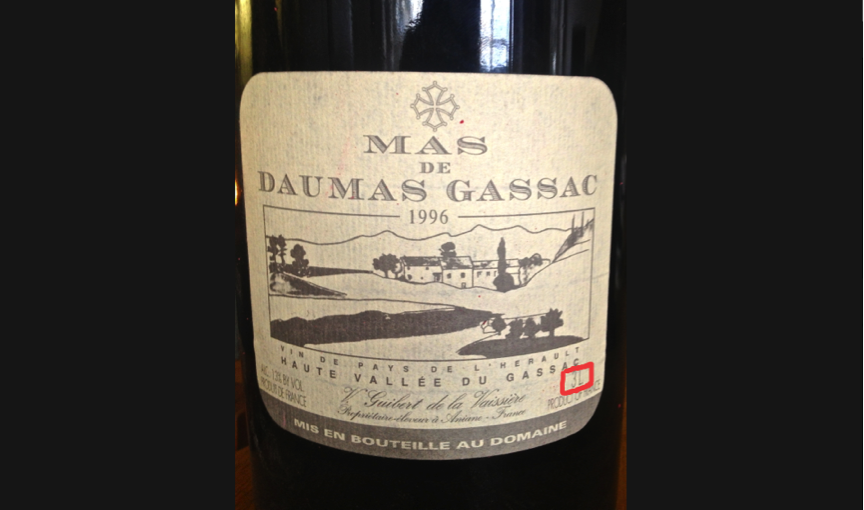
Bought just a year ago on the secondary market, this 3 litre double magnum was apparently well kept, coming out of good storage in its original wooden box and with a high fill level. I acquired it on a whim for GBP 80, knowing full well that the standard bottle size of this vintage could well be fading fast, following Cellartracker! notes and Chris Kissack from The Wine Doctor.
In the event, once the wax seal was broken and a delicate cork extracted, the wine was delightful; darkly coloured with a rusty-bricked rim. Sweet cedar and savoury scents gave way to a palate of earthy blackberry, lifted with bright notes of fresh currents providing the requisite balance and energy on the way to a soft delicate finish. Hard to resist before the meal, but showing enough power and substance to complement the roast duck.
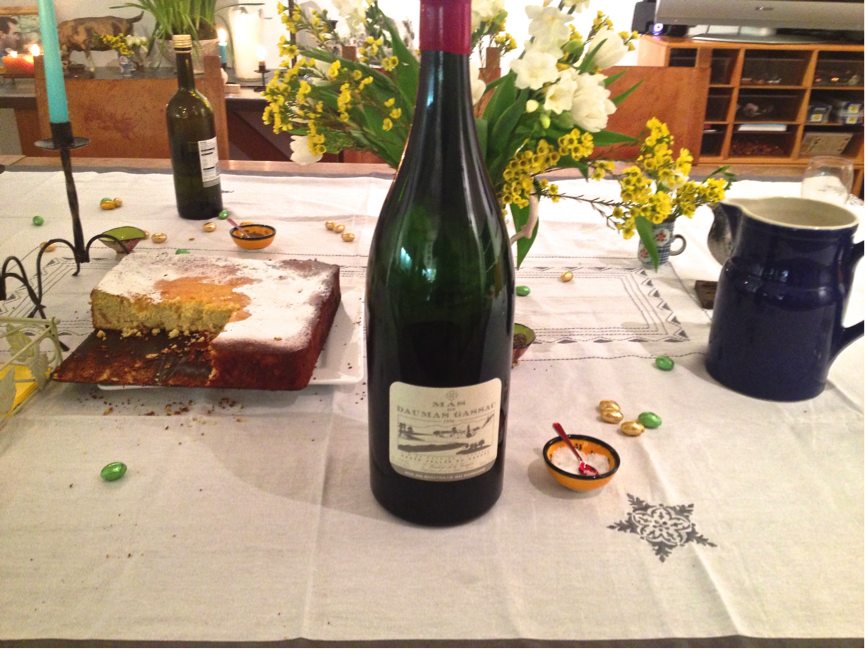
The moral of this story: take drinking advice for large formats with a large pinch of salt.
Buying bigger bottles on the secondary from other collectors can be a rewarding experience full of nice surprises. Sure there are disappointments along the path of discovery and fine wine appreciation, and you can't exactly ask for your money back from another collector. But that misses the point; buy what you can afford and savour the victories!

